In recent months, a quiet but alarming shift has rippled through the UK property sector — ageing façades peeling, drainage systems failing prematurely, and interiors suffering from hidden defects.
Maintenance firms and property professionals are sounding the alarm: the traditional reactive “fix-when-it-breaks” model is buckling under pressure. The era of surprise failures may be ending.
Below, we dissect what’s happening, who is at risk, and how your upkeep business can stay one step ahead — not just repairing damage, but preventing it.
The Warning Signs: Failures on the Rise
- Façade & Cladding Deterioration Accelerating
Reports from managing agents suggest that façade panels, sealants and glazing are showing wear five to seven years earlier than expected. Minor water ingress is turning into structural rust or internal damp. - Drainage, Roof & Gutter Failures Becoming Commonplace
Blocked downpipes, cracked roof membranes and gutter collapse are occurring more often. These “small” faults are now triggering serious interior damage (plaster breakdown, mold, ceiling stains). - Rising Complaints from Residents & Leaseholders
In new developments, residents are reporting leaks, drafts, and loose finishes just months after handover. Instead of a few snags, there are entire categories of wear and defect complaints. - Cost Inflation & Supply Chain Delay Amplify the Problem
When a minor repair is delayed due to material availability or inflated cost, what was once cheap becomes expensive — sometimes 3x the original estimate within weeks.
These trends point to a sector under strain — not through neglect, but because the old assumptions about building lifecycles no longer hold. The experts at UpKeep Property Maintenance recommend shifting from reactive fixes to proactive, data-led upkeep strategies that anticipate and prevent failures before they escalate.
Why It’s Happening: The Underlying Drivers
| Driver | Impact on Maintenance |
| Materials & Construction Shortcuts | Developers increasingly use lighter, thinner panels or less durable sealants to cut cost — but with reduced longevity. |
| Climate / Weather Extremes | Heavier rainfall, thermal cycling, more freeze-thaw cycles stress building envelopes faster. |
| Deferred Maintenance Culture | Many property owners delay small works, pushing problems beyond manageable scope. |
| Fragmented Handover & Ownership Gaps | When contractors, developers, freeholders, leaseholders don’t align, maintenance accountability falls between cracks. |
| Regulation & Compliance Pressures | New fire, safety, insulation, and façade regulations force early repairs or replacements on older systems. |
Put simply: buildings are aging faster than ever, and systems designed for “ten-to-fifteen-year service life” are now failing sooner.
Who’s Suffering — and Who’s Watching
- Freeholders / Landlords find themselves facing surprise liability bills when common areas or external works degrade.
- Managing Agents deal with ever-higher service charge claims, demands from residents, and reputational risk.
- Developers must manage costly warranty claims, reputational risk, and disputes post-handover.
- Residents & Leaseholders endure disruption, noise, leaks and safety issues — and often have to wait weeks for resolution.
In short: the strain is felt up and down the property chain.
The New Maintenance Mandate: What Upkeep Specialists Must Do Differently
This is no longer about emergency callouts or cosmetic fixes. To thrive, maintenance businesses must evolve:
1. Adopt
Proactive / Predictive Maintenance
Don’t wait for failures. Use sensors, regular condition scans, thermal imaging, moisture detection and trend analysis to spot early signs of decay.
2.
Handover into Retained Partnerships
Where possible, position your firm at the end of construction contracts, ready to assume ongoing maintenance. This avoids the “who’s responsible?” void and gives continuity.
3. Offer
Tiered Retainer Packages
Instead of one-off quotes, present maintenance contracts (bronze, silver, gold) that bundle inspections, minor remediations and emergency cover. Lock in clients and smooth revenue.
4. Build a Transparent
Client Dashboard
Let clients see live issue tracking, defect age, repair schedules, cost forecasts and maintenance histories. Transparency builds trust and cuts disputes.
5.
Strategic Material & Supplier Partnerships
Forecast your stock of sealants, membranes, fixings and finish materials. Build relationships with suppliers who can guarantee lead times. Use high-spec materials to reduce repeat failures.
What Clients Should Demand From Their Upkeep Partner
- Proven track record on buildings of similar scale and design
- Data-driven approach (sensors, dashboards, analytics)
- Clear SLAs & guarantees (repair windows, workmanship warranties)
- Flexibility & scalability to cover small and large sites
- Full transparency in pricing, reporting, workflows
Encourage developers and freeholders to include performance clauses in procurement so upkeep firms are chosen based on long-term value — not lowest bid.
Trusted Resources for Property Professionals
For those seeking deeper insights into regulation, compliance, and industry best practices, here are key authority sites:
- Health and Safety Executive (HSE) — official UK guidance on workplace and building safety standards.
- UK Government: Building Regulations — essential for compliance on fire safety, ventilation, insulation and more.
- Chartered Institute of Building (CIOB) — leading professional body with research, case studies, and training for construction and maintenance.
Including these resources in ongoing learning ensures that upkeep specialists remain aligned with the latest legal requirements, safety standards, and technological advances.
Conclusion: A Moment of Transformation
The old reactive model of property maintenance is under siege. Failures are occurring faster, the costs of delay are rising, and client expectations are changing.
For specialist upkeep firms, this is your inflection point — those who adapt will shift from “fixers” to strategic partners in preservation. Your value proposition won’t be about how quickly you can patch a leak — but whether you can prevent leaks from happening in the first place.
If you can position yourself to handle lifecycle risk, data, and transparency, your clients will not just see you as a vendor — but as an essential guardian of their property’s future.


